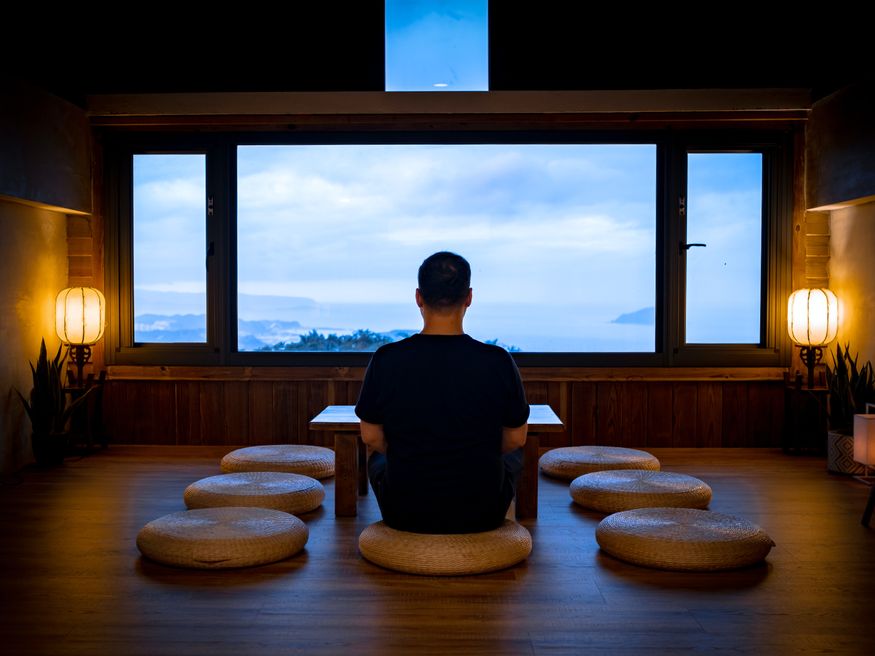Once for Hippies, Now for the Top CEOs
Published on 6/10/2021
Things always come back in style. Whenever I’ve been clearing out my closet in the presence of my mother, she is always quick to remind me of this. I’ll toss my three-quarter leggings or converses to the donate pile, only to have them quickly snatched up and this truth thrown at me. In many ways, she’s right, as she’s witnessed all these clothing trends come back in fashion, watching the 80s and 90s become chic once more and the reintroduction of the Rachel haircut. But on the other hand, some things belong in the past.
This trend surpasses the boundaries of fashion and extends to practices and interests. From music to film to lifestyle, we are constantly searching to bring back what worked, or even what didn’t quite work at the time but could now. In our technologically fast lives, we search for that sense of nostalgia that only the past could fuel. But when things get brought back, it’s often under very different terms and with a new sense of ownership. So whilst we welcome the past into the future, we do so on our terms and eager to take credit for it.
A prime example lies in mindfulness and all of the practices stemming from that search for sanity and tranquillity in a hectic life. Mindfulness and yoga were once tossed aside as ‘hippy concepts’, along with excessive drug-taking. But in the present, as these practices become increasingly relevant and recommended, their target demographic differs significantly, and new ownership has been taken over caring for one’s mind and self.
Mindfulness and yoga
Stretching in tight leggings to the sounds of waterfalls or crickets chirping is not what you would immediately associate with a fast-paced workplace. Still, nowadays, corporations are opening their doors and minds to yoga and mindfulness. Whether it’s organising sessions for the entire company, including memberships into their salary packages or simply the CEO designing their schedule to include it - some may even spot their managers doing it behind their desk!
Just consider the many books or articles surrounding success and productivity, many of which will involve a routine starting at an ungodly hour where yoga or meditation is first on the schedule. Many companies have been formed around this need to meet the introduction of yoga into the corporate sector. The idea is that a healthy mind and body are needed for maximum productivity and efficiency, but rather than looking at reducing working days and providing proper mental health assistance, we use the easier plaster of yoga sessions or a guided meditation.
Before this shift to the corporate sector, yoga wasn’t just an activity but rather a way of life. It was a way of thinking, a form of dedicating yourself to the present and to more than what meets the eye. But yoga and meditation have been reduced into quick fixes, to the extent that you now have meditation apps with a subscription fee. They have been repackaged to find a place in our busy world, and through that, repossessed by entrepreneurial thought leaders.
The case of microdosing
When I was younger, I once saw a shirt in a store that said “Pugs not drugs”, and I think that perfectly summarises the attitude we held towards drugs. It may have been a more lighthearted manner of getting the subject across, complete with a cartoon pug face, but it was always a present message. We were warned about the danger of drugs, faced with horror stories and the prospect of never getting a job if you did drugs. I was surprised when I came to the Netherlands for university and witnessed someone taking drugs next to me so casually, and more surprised when I discovered everyone seems to be doing it. That isn’t to say it’s my cup of tea in the slightest, but rather I had always considered drugs to be this extreme, that spirals out of control and ruins your life, whilst others took them recreationally.
Psychedelic drugs were associated with the hippy culture, and “LSD is still most strongly associated with hippies who embraced its mind-expanding properties” (Holly Williams, BBC Culture). It was all about taking a trip and leaving your reality, a souvenir of the summer of love.
But in recent years, LSD and other drugs have undergone a dramatic shift in public image. They’re being snatched back from hippy culture and having a place dug out for them in entrepreneurial settings. Steve Jobs has been one of the first big names in business to be associated with LSD in this manner, claiming it was one of the most important things he ever did. As a result, people are beginning to consider how psychedelic drugs could be paired with maximum productivity and work, and from that comes microdosing.
Microdosing involves consistently consuming a small, sub-perceptual portion of a psychedelic substance, such as LSD or mushrooms. Promoted by the likes of Joe Rogan and Gwyneth Paltrow, CEOs and entrepreneurs are always looking for ways to expand their mindset and growth, and the newest craze is microdosing. It’s believed to help with performance enhancement, including increased creativity and efficiency. But, aside from the obvious work performance, microdosing is also thought to assist with symptoms of depression, pain relief and other mental health issues. There are dozens of companies promoting and selling microdosing kits, for surprisingly low prices.
And yet, despite this trend, there is still a lot of judgement and classism surrounding the use of drugs. It’s okay to take LSD or psilocybin mushrooms when it is in a microdose every single day, and you have a fancy title at work, yet taking drugs in a recreational setting and unrelated to your employment is still ‘worse’.
The repackaging of mindful practices and the introduction of microdosing could be considered in two ways. Firstly, it could show how those in power and authority determine what is acceptable and not, and how things are only appreciated on their terms. Or it could show how we adapt the past into the present, how we recycle things to make them fit into the new society; whether that’s bicycle shorts with oversized sweaters on Gen Z teenagers or a meeting room filled with yoga mats. It’s important to remember where things started, the truth behind a ‘trend’ and who deserves to be acknowledged for it. It’s important to remember that a trend isn’t for everyone and that it isn’t indicative of what is good for you and wrong for you; that’s too subjective to ever put into popularity terms. For now, it’s something that makes me chuckle and appreciate the weird world we live in, one where CEOs start their day with LSD and earn thousands whilst they do so. One where I’ll probably be recommended yet another article about how entrepreneurs start their day at 5 am with meditation and a moment of gratitude.
Featured posts

Fleur
Welcome to Symptoms of Living! A place where I like to relieve myself of the barrage of thoughts and ideas filling my mind. Here I'll take a look at various topics, from books to BPD, series to self-harm, there's nothing that we can't, and shouldn't, talk about.
Having struggled with mental illness since the age of 15, one of the hardest parts was how alone I felt in it. While mental illness is beginning to be discussed more openly, and featured in the media, I still think there is room for improvement. So whether it is mental illness or merely mental health, a bad day or a bad year, let's make this a place to approach it and strip it back. Everyone has their own symptoms of living, and you certainly won't be the only one with it.
Would you like to receive my top monthly articles right to your inbox?
For any comments/questions/enquiries, please get in touch at:
info@byfleurine.com
I'd love to hear from you!